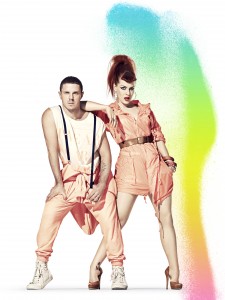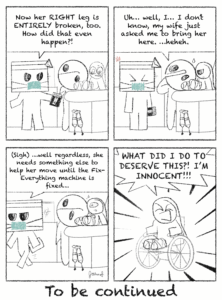There are hell weeks, and then there are weeks where you swear you are locked in ice with Satan at the heart of Dante’s Inferno. Last week fell in the latter category for me, but I do not mean to make excuses for myself when I say that some opinions in my last column were ill-informed, to put it lightly. To refresh anyone’s memory, I was discussing consumer activism, clothing lines uniting with nonprofit or charity organization and my sneaking suspicions about the validity of these partnerships. Namely, I mentioned an H&M venture called Fashion Against AIDS. What at first seemed to me a suspect project is, in retrospect and with some much-needed information, entirely otherwise.
I received an email from Ninette Murk, founder of the nonprofit organization Designers Against AIDS (DAA), who was kind enough to fill in some blanks for me about Fashion Against AIDS (FAA). What I misread as a lackluster campaign is in fact a four-year-strong collaboration that has raised over $4 million through three collections. This money, as Murk told me, has been donated to the MTV Staying Alive Foundation, YouthAIDS, the United Nations Population Fund (UNFPA) and DAA (which has used the funds to found its first HIV/AIDS Awareness Education Center).
I did a bit of research on Murk, and her story turns out to be quite an inspiring one. According to an interview with BaseNow, Murk was originally a fashion journalist based in Belgium. She decided to head the effort to create an AIDS awareness organization after her assistant, Peter, passed away from the disease. Working as a freelance writer to keep a steady income, in addition to two or three extra daytime jobs, Murk eventually earned DAA a big break in 2004 by working with H&M on the FAA campaign.
What I was surprised to discover was that H&M donated 25 percent of their entire sale price and not just their profit from the collection. That statistic makes for a much larger commitment on H&M’s part than I first understood. As if working with DAA is not enough, H&M also designed their latest FAA collection to be entirely unisex. As the press release explains, “The HIV/AIDS message is as important for young women as much as it is for young men.” Expanding their buyers is a vital step for FAA: its primary goal, , is to increase awareness.
That is what struck me most about DAA. As with any charity effort dealing with AIDS, it is difficult to market preventative measures for a disease without a known cure. What DAA focuses on, then, are the following two messages (according to their website): 1. Prevention is the only cure for HIV/AIDS, and 2. Know your status (get tested).
I fear that our generation has already been desensitized to AIDS. This is encouraging when considering the measures already taken in prevention of the disease, but detrimental if we grow numb to the issue. AIDS is still an epidemic in many parts of the world, and our near and dear Rochester is not beyond its reach.
According to the DAA website, over 65,000 Americans and Western Europeans became HIV-positive last year, and the number infected is rising by virtue of unprotected heterosexual sex. Need I remind you: You do not have to be gay (or be from Africa) to contract AIDS, two stereotypes the DAA points out knowingly. This disease is affecting the entire human population, not just a select, sorry few.
Murk and the rest of the team at DAA are savvy. Although it may seem depressing to those of us in the grips of youth culture, we are suckers for celebrity and sex. The fashion industry is a powerful and influential machine when it combines the two, as it often does. The fashion industry, logically, is charged with selling clothes. As it happens, it also sells ideas of what is sexy, beautiful and “in.” These messages are then transmitted to us poor college students who take study breaks staring at American Apparel models while sobbing into our half-pound bags of chocolate-covered pretzels.
Alas, that is the world we live in. I admire DAA’s effort to harness the power of the fashion industry and channel it into a cause that, as uncomfortable as it is, will seriously affect those around us: friends, family, partners, even ourselves.
Yes, maybe we will buy the clothes because Penn Badgley and Ginnifer Goodwin are wearing them in the ad campaign. Yes, maybe we are thinking more about purchasing that leather vest because of its gorgeous asymmetrical cut than because 25 percent of the price will go towards this cause. (Honestly, that’s my favorite piece from the line.) But this is all to be expected: That’s how we operate. That some good is being done in the meantime is encouraging enough for me.
Burritt is a member of
the class of 2013.


